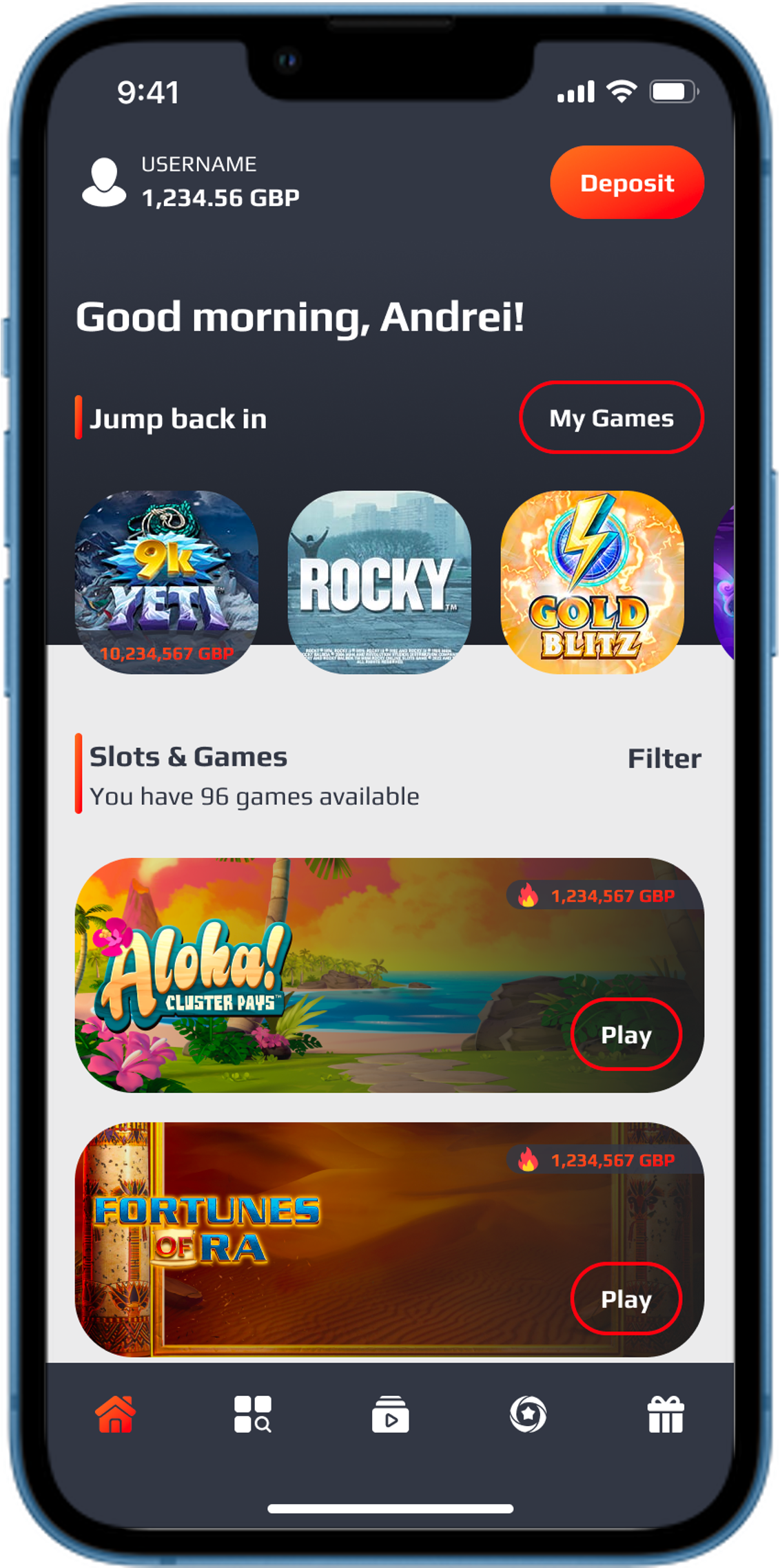High Level Overview
I was brought into GIMO to take responsibility of the apps for two of the agency’s clients: NetBet and Casino777. Shortly after arriving, we decided we needed to rebuild…
Review
After conducting a heuristic evaluation and performance review of the products, it became evident that the UX did not adhere to accepted usability principles and the code was highly coupled.
Strategy
After the initial review, I proposed a vision and product strategy. This aimed to restructure the development process, define the phased development of the products, and establish both business and user success metrics.
Product Redesign
Having outlined the value of a adopting a customer-led approach, I enlisted the expertise of Claudio Jimenez, a top Senior Product Designer, who immediately hit the ground running in defining the UX for both client products.
Expectation Management
I put a strong focus on ensuring the vision for the products was aligned at every stage. This included weekly reports with the C-suite, steering meetings with stakeholders and regular alignment with cross-functional teams.
Native Design
All UX was based on Human Interface Guidelines and Material Design
Compliant List View
Designed a new list view to be compliant with new Apple Guidelines.
Server-Rendered UI
Server-rendered UI allows for us to develop the app in a fashion akin to web.

Data-Driven Analysis
Early integration of FullStory provided enhanced analytics during dev and launch.
Configurability
Remote configuration means we can adapt promotions and compliance on the fly.
Revolutionary Download
This will be the first app in the industry to allow users to manage their downloads.
Some more information…
Rebuilding the apps from scratch was a huge undertaking , and has led to an incredibly exciting journey, with unexpected twists and turns…
What led to the decision to rebuild the apps, and was this truly the best course fo action?
When I first joined GIMO, and after being introduced to the brands, stakeholders and other members of the C-suite, my first priority was to understand the current products. I wanted to put myself in the frame of mind of the user and look at the products through their eyes. Taking this approach I identified a number of areas of improvement.
I began by testing the products, I carried out functional, performance, compatibility, usability and accessibility testing, and felt the users deserved the very best gaming experience. With this in mind, I quickly went about defining the product strategy…
Within the first month, I defined a SWAG (stupid wild-ass guess) approach. I worked with the business to define the product we sought to build, this consisted of identifying:
- What is it?
- What benefits do we hope to deliver?
- What will the personality of the product be?
After this, it was time to define the brand promise, we wanted to dent the universe by creating something revolutionary, and navigate Apple’s casino compliance regulations, creating a feature we expected the industry to copy,
this eventually came in the shape of ODR game download management. The brand promise aims to build inspiration, this is something Netflix has become known for in the industry with the “Movie Enjoyment Made Easy” mantra.
My next step was to outline the product vision, I wanted to dramatically enhance the gaming experience, and drive engagement through perfection. Not product perfection (not yet, anyway) but iterative perfection. I needed to expand on what was working and change what wasn’t, I needed to challenge long established assumptions, and get big (really big) on data and insights, as this was lacking. We weren’t at the stage at which we could start enhancing marginal product gains (since we were rebuilding), but that’s only because there were so many other wins that could be leveraged, and experiences which could be entirely rebuilt.
I led my product strategy adopting the GEM model, which is driven by growth, engagement and monetisation. The critical factor for me was the engagement metric, which defines the product’s quality. With this I then created my rolling four-quarter roadmap, which always comes last since this is an expression of the product strategy. The challenge with roadmaps is that they come with time commitments, which can sometimes run the risk of being the enemy of iteration. Typically, I can always commit to the near quarter, but not too much beyond. “But you’re building a product from scratch, Kris…” I hear you say… “Shouldn’t this essentially be more akin to waterfall, than lean agile?”.
Not necessarily. When I joined, there were four developers, I have since doubled this, we didn’t have a product designer, now we have two, the now Project Manager was the caretaker Product Manager, and we didn’t have a backend developer; the team are new to working with each other. In addition to this the Senior Backend Architect left suddenly, and we discovered there was very little API documentation. When you bring these factors together, priorities, especially when dealing with an MVP and strict timelines, can require making strategic changes on the fly, whether it’s to reallocate resources to unblock a dependency, or whether that means redefining the MVP and aligning this with stakeholders.
Once all our ducks were in a row, we kicked off the project… development was underway. “How was it built though?”, next tab for that…
